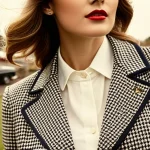Historical Context of Beauty Standards in the UK
Throughout history, the beauty standards in the UK have continuously evolved, reflecting broader societal shifts. The Victorian era, for instance, defined beauty with an emphasis on modesty and virtue, often glorified through pale skin, soft features, and a gentle demeanor. This period revered a restrained aesthetic, viewing flamboyant displays as unseemly.
Transitioning into the 20th century, beauty perceptions began to shift alongside significant historical events such as the World Wars. The Roaring Twenties saw a liberation from traditional norms, with the introduction of flapper culture, where shorter hemlines and bold make-up reflected a newfound freedom. This was a period that challenged previously rigid notions, inviting a more dynamic view of beauty.
Topic to read : How Can Understanding UK Fashion Trends Enhance Women’s Beauty Routines?
Post-war Britain ushered in the Swinging Sixties, a transformative decade marked by milestones like the emergence of iconic figures such as Twiggy, whose androgynous look reshaped beauty ideals yet again. This era celebrated individuality and rebelled against conventional styles, leading to more personalized expressions of beauty.
Each change in the historical beauty standards of the UK not only marked a new milestone but also echoed the societal and economic transformations of the time. Understanding these shifts provides crucial insights into the broader evolution of cultural ideals and continues to influence present-day beauty norms.
Additional reading : How Does British Fashion Evolve Women’s Beauty Trends?
Current Trends in Beauty Definitions
In recent years, there has been a notable shift in current beauty trends within the UK, reflecting a broader push towards inclusivity and diversity. As societal norms advance, beauty definitions are increasingly shaped by various movements advocating for representation across different identities. Brands are playing a significant role by promoting messages that embrace a wide array of looks, thus contributing to less rigid beauty norms.
Prominent public figures and influencers have also been instrumental in reshaping the narrative around beauty. By challenging conventional ideals and endorsing authentic self-expression, these individuals influence a diverse audience, normalising a spectrum of appearances in mainstream media. Their social media platforms provide powerful tools for spreading messages that redefine traditional standards.
Moreover, the growing emphasis on inclusivity is evident in the marketing strategies of popular brands. Companies are now more likely to feature individuals from varied backgrounds, body types, and genders in their campaigns, promoting a holistic view of beauty that aligns with today’s society. This trend not only broadens the scope of what is seen as beautiful but also encourages consumers to appreciate and celebrate uniqueness.
Through these initiatives and influences, UK beauty norms continue to evolve, reflecting a societal transformation that values diversity and individuality. These changes mark a move towards a more inclusive environment where everyone can find representation.
Diversity in Beauty Standards
In the UK, diverse beauty representations are increasingly vital, reflecting a shift towards inclusivity. This change underscores the importance of racial and ethnic diversity in reshaping traditional beauty standards. Recent initiatives within the beauty industry have sought to amplify voices from underrepresented communities, celebrating a variety of skin tones and cultural backgrounds.
Body positivity movements have profoundly impacted UK beauty standards, advocating for the acceptance of all body types and promoting self-love. Campaigns often feature models with different body shapes, challenging stereotypes and encouraging a broader view of beauty. This inclusivity addresses societal pressures and promotes a healthier body image.
An array of case studies highlights the contributions of diverse beauty influencers who leverage social media platforms to champion inclusivity. These influencers often collaborate with brands to ensure a wider representation across different marketing campaigns. Their efforts not only diversify beauty norms but also inspire a global audience to embrace authenticity.
This active embrace of diversity and inclusivity in beauty has extended into various sectors, shifting the consumer perception toward a more egalitarian ideal. As inclusivity becomes increasingly central, it reflects a broader societal transformation valuing uniqueness and representation.
Influence of Social Media on Beauty Perceptions
In the digital age, social media platforms like Instagram and TikTok play a pivotal role in shaping beauty trends. These platforms offer a real-time, interactive space where beauty influencers and everyday users alike can share their unique styles and preferences, challenging traditional beauty norms with unprecedented immediacy. A standout feature of platforms like Instagram is their visually-driven nature, allowing users to present curated, aesthetic-focused content that can rapidly go viral.
User-generated content has significantly impacted traditional beauty perceptions by promoting authenticity and personal expression. Unlike once-standard mainstream media portrayals, today’s influencers encourage embracing distinct individual features, often through unfiltered and candid posts. Viral beauty challenges, such as creative makeup tutorials or innovative skincare routines, frequently emerge, further diversifying consumer expectations and definitions of beauty.
A clear example of this influence can be seen in the rise of unconventional beauty trends prompted by social media’s broad reach. Many influencers, regardless of professional status, experiment with new looks, often starting niche trends that gain traction and eventually become mainstream. This shift demonstrates how digital platforms impact not only fashion choices but also broader societal standards, ensuring a continually evolving landscape.
Varied Viewpoints Across Demographics
The diverse tapestry of the UK’s demographic landscape plays a significant role in shaping beauty definitions. Age, ethnicity, and socio-economic status each contribute distinct perspectives, influencing how beauty is perceived and valued across different segments. For example, younger demographics might prioritize trends set by influencers on social media platforms, valuing uniqueness and creativity, while older generations may adhere to more traditional standards.
Ethnic diversity within the UK introduces a wealth of cultural influences that redefine beauty norms. Communities with rich cultural heritages often prioritize different aesthetic elements, which can challenge mainstream beauty ideals. This multicultural blend pushes the collective understanding of beauty towards a more inclusive outlook, recognizing diverse features and styles.
Research and surveys illuminate these varied viewpoints, highlighting how socio-economic factors also affect perceptions of beauty. People from different economic backgrounds may have varying access to beauty products and services, influencing their personal beauty standards. Similarly, regional differences within the UK, such as urban versus rural perspectives, further diversify this landscape.
Each demographic viewpoint not only enriches the tapestry of beauty standards but also highlights the importance of inclusivity and representation in contemporary beauty discussions. By acknowledging these varied perspectives, the beauty industry can better cater to a wider audience, fostering an inclusive community that celebrates diversity in all its forms.
Expert Opinions and Statistical Evidence
In the dynamic world of beauty, expert analysis on beauty and statistical data offer invaluable insights into evolving standards. Interviews with renowned beauty scholars reveal a shift towards more inclusive and diverse ideals. These experts argue that historical beauty standards, once rigidly defined, are increasingly challenged by societal changes and cultural diversity.
Statistical evidence further underscores this transformation. Recent surveys indicate that a sizeable percentage of UK consumers prioritize inclusivity and representation in beauty products. These statistics reflect a broader societal push towards embracing uniqueness, with many individuals seeking products that cater to a range of skin tones, body types, and aesthetic preferences.
Academic research delves into the social impact of beauty standards, illustrating how these norms influence self-esteem and identity. Studies show that exposure to diverse beauty representations can foster positive self-perception and promote acceptance of individual differences. This research supports the growing consensus that contemporary beauty ideals are moving away from one-size-fits-all approaches, focusing instead on celebrating diversity.
Together, these expert opinions and statistical findings paint a picture of an industry undergoing significant change, driven by consumer demand for inclusivity and authenticity. This shift not only redefines what is considered beautiful but also encourages a more nuanced understanding of beauty in the UK context.
Case Studies of Beauty Evolution
In the intricate tapestry of beauty standards, case studies serve as defining markers of how perceptions have morphed over time. By delving into specific examples, we can witness the transformation of beauty ideals and the underlying societal dynamics at play.
One notable example is the Victorian era’s penchant for modesty, best exemplified by the era’s fascination with pale skin and soft features. This was largely influenced by societal values that esteemed restraint and virtue. In direct contrast, the Roaring Twenties ushered in an era of liberation, with the flapper culture embracing short hemlines, bold makeup, and an overall sense of freedom, triggered by the aftermath of the First World War and the onset of modernism.
Transitioning into the 1960s, the emergence of figures like Twiggy marked a radical shift in beauty norms. Her androgynous look challenged traditional feminine beauty, setting the stage for an era that celebrated individuality. This period also mirrored the economic optimism and societal transformation of post-war Britain, where youth culture began to heavily influence fashion and beauty industries.
A comparative look at marketing strategies over these eras reveals the impact of societal changes. Victorian advertisements emphasized products that enhanced features emblematic of modesty, while 1960s campaigns celebrated bold, individualistic styles, often associated with avant-garde fashion houses. These advertising strategies not only sold products but also shaped the beauty ideals of their time, reflecting evolving cultural values.
From these historical narratives, contemporary beauty marketing learns valuable lessons. Brands today can draw inspiration from past escalations of change and the factors that drive these shifts. Understanding the blend of economic, social, and cultural forces that historically influenced beauty ideals informs how modern brands navigate their representation, addressing more diverse and inclusive standards fitting for our era.
Psychological Impact of Beauty Standards
In exploring the psychological impact of beauty standards, it is crucial to understand how societal ideals permeate individuals’ self-esteem and mental health. Beauty standards have long influenced personal identity, often setting unattainable benchmarks for physical appearance. This psychological influence becomes particularly significant when considering how these standards impact body image and self-worth.
Research in psychology highlights the correlation between exposure to rigid beauty standards and increased rates of body dissatisfaction, especially among young individuals. The pressure to adhere to idealized images often contributes to mental health issues such as anxiety and depression. These psychological effects underscore the need for promoting a more inclusive and diverse representation of beauty.
Increasingly, there is a movement towards embracing natural beauty and promoting self-acceptance. Campaigns advocating for body positivity and self-love have gained traction, challenging traditional ideals and fostering healthier mentalities. Emphasizing the acceptance of diverse body types and features helps mitigate the negative psychological impact associated with beauty standards.
Educational initiatives also play a role in reshaping perceptions and reducing psychological harm. By raising awareness about the unrealistic nature of many beauty standards, individuals can develop a more critical understanding and appreciation of their intrinsic worth beyond physical appearance.





